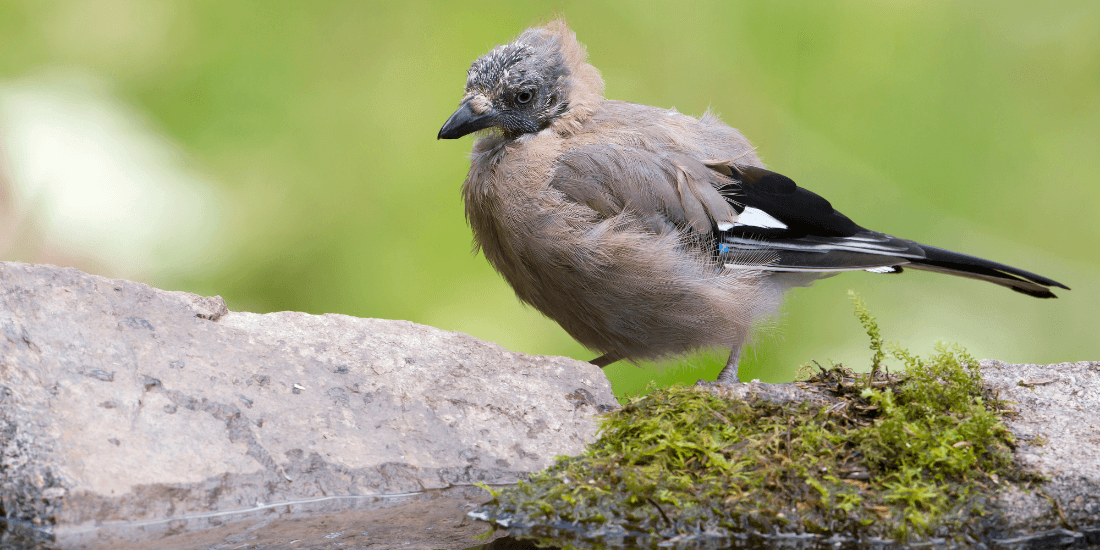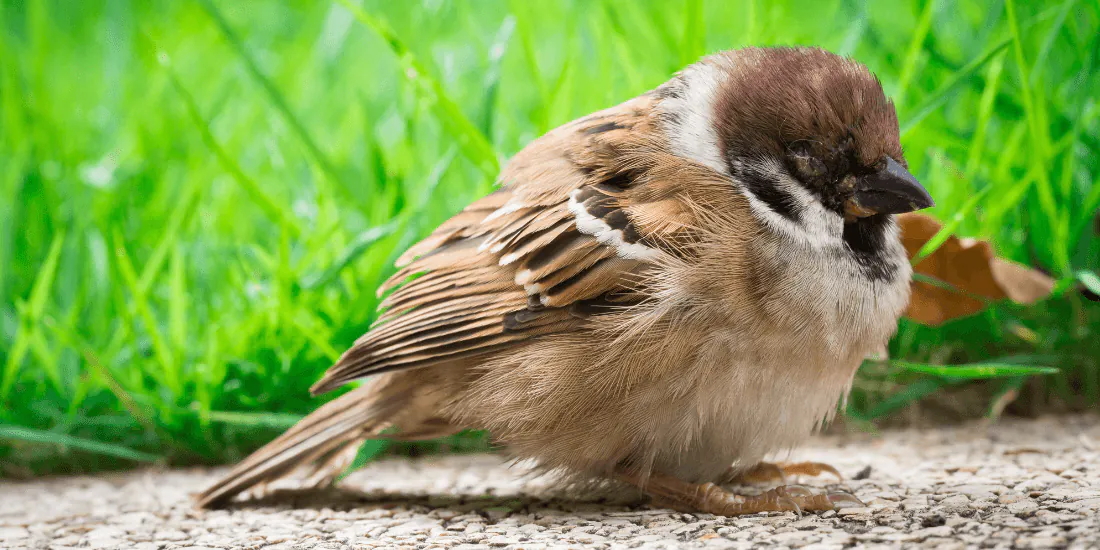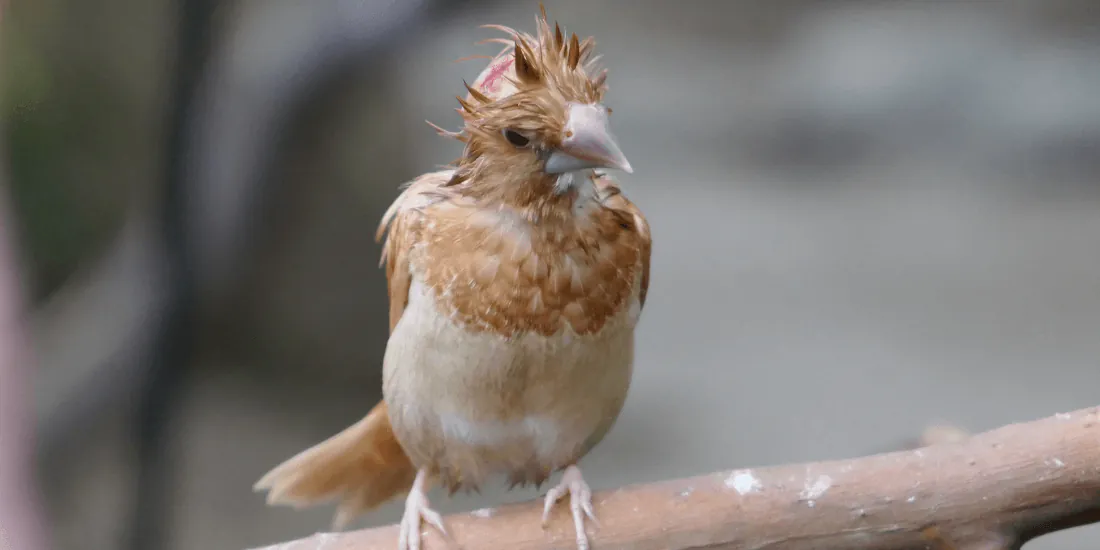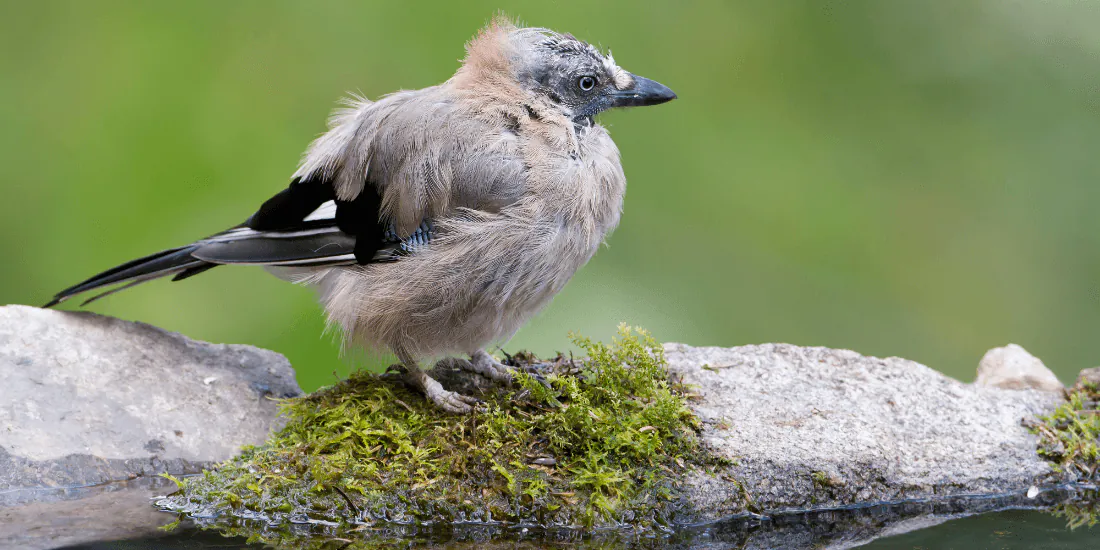How to spot signs of wild bird illness

Since a wild bird can't tell you when it feels sick, we share advice on recognising when a bird is not feeling well, how to spot signs of wild bird illness, what to do if you find a sick bird, and what steps to take to aid its recovery.
Signs of wild bird illness
Wild birds inhabit the great outdoors, and although they are hardy and fantastic survivalists, they can succumb to many different illnesses and injuries. Often when a bird is unwell, it will not visit your feeders and will usually stay out of sight to avoid predators. However, when wild bird illness does appear, there are two ways to recognise something wrong: to observe the bird's appearance and ensure its behaviour isn't suggesting something wrong.
Spotting signs of wild bird illness by their appearance

We all know healthy birds look clean and bright and have no problems hopping around as they go about their tasks – often looking like how you would picture them on a postcard or in a nature documentary. Its feathers will be neat, it will have no trouble moving, and its eyes will be clear and alert.
On the other hand, sick birds may show several symptoms that go against how you would expect to see a bird in the wild, and we have outlined below several common visible signs that a bird is unwell.
Visible signs of wild bird illness to look for:
- Fluffed, dirty or matted feathers
- Swollen, bloated or dull eyes
- Difficulty walking or flying
- Rapid breathing
- Excessive drinking
- Drooping wings
- Limping
- Tilted head
Although physical appearance is often an obvious indication that a wild bird is unwell, it can often be challenging to get a clear view of these visible problems, especially on smaller birds. It is also worth noting that some birds may not even show physical problems, but it can be evident that something is just not right. In instances like this, you should focus on their behaviour to better identify what could be wrong.
Recognising sick birds by their behaviour

Easy to spot behaviour of wild birds that are ill:
- Unsteady breathing or puffing and panting as they inhale and exhale
- Inability to fly or hesitation when they try
- Drinking continuously
- Not moving, even when approached or threatened
- Sagging wings
- Slouched or unsteady posture
- Deciding to build a nest in open areas, on windowsills and even on the ground
- Hobbling or limping as they walk
- Lacking the ability to hold the weight of their head
- Squinting or struggling to stay awake
- Getting attacked or snapped at by other birds that appear healthy
It is worth mentioning that not all birds showing these symptoms will necessarily be ill or require immediate attention. Still, a bird showing unusual behaviour such as this is enough to encourage you to take a closer look to be sure they are not actually in distress.
Identifying birds that aren't ill but still appear unwell

In cases like this, it is important to identify their issues (or lack thereof) and leave them alone once you are sure they are not at risk. Remember that no matter how much you think you might be helping, there are a few situations where you could do more harm than good – continue reading for more information.
Baby Birds
It's a human reaction to want to help a baby bird when we see one away from the nest. They might look sick with their bald skin, fluffy feathers, oversized beaks and eyes. They can often appear sick as they flutter around and are too weak to fly or may even cry for attention. But this is usually normal behaviour, and unless the chick is clearly in danger, it should be left alone because its parents are likely nearby, keeping a close eye on it.
Moulting Birds
Birds can look like they are not having a good time when moulting, with bare patches of skin and scruffy feathers. Some species of bird may even be unable to fly during parts of their moulting process, but this is normal.
The bird moulting process can take several weeks and is a natural way for them to revitalise their feathers – and they require no assistance or help during this time.
Bald Birds
A few species of local birds can show signs of baldness throughout the year. For example, birds such as jays and cardinals can have bald heads during their moulting season, which is normal and not a sign of illness.
Deformed Birds
It is common to see birds with natural deformities such as oversized beaks, crooked talons, missing claws, or misshaped feathers. Some birds may even be missing feet or legs due to injuries they have recovered from in the past. Seeing birds like this can be startling and often worrying, but if the bird is active, alert and feeding with no signs of a fresh wound or recent injury, it is safe to assume it is not sick or in need of instance.
How can we help wild birds
Seeing sick birds and witnessing them in distress is hard, but illness is ultimately part of a natural cycle of life. And this is another area where we can help birds:
- By keeping bird feeders clean, you are minimising the risk of disease spreading among the population
- Offer high-quality bird food that is packed with oils, nutrients, and energy
- Place your feeders in safe locations away from predators
- Ensure there is a good supply of clean water in dishes and/or bird baths for them to drink and bathe
- Place nesting boxes in locations where birds will be safe
- Clean your nesting boxes at the end of the season to keep them clean and hygienic
Knowing what to look out for and how to spot signs of wild bird illnesses means you can assist when they need help. If you have followed the advice above but are still concerned that there is a bird in need, then animal rescue societies are always ready to help.
You can contact the RSPCA (England and Wales), SSPCA (Scotland), USPCA (Northern Ireland), your local vet or a local animal rescue centre. These specialists have the expertise to help and advise you about sick or injured birds and animals. The HelpWildlife website also offers advice on what to do and provides links for the wildlife rescue services in your area.